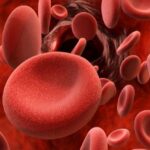What can we learn from the new regional anaesthesia survey?
Over the last 20 years, regional anaesthesia practices have evolved with increased use, largely thanks to ultrasound, technical improvements and lower costs. With these changes, how does the use of regional anaesthesia vary across Europe?
How do new technologies and techniques impact the applications of regional anaesthesia, as well as the reporting of complications?
Regional anaesthesia survey structure
To greater understand the current landscape of regional anaesthesia practiced in Europe, an advisory board of seven anaesthesiologists launched a European-wide survey focusing on the following key topics:
- Current regional anaesthesia practices
- Patient safety
- Training
- Awareness of NRFit™ (neuraxial regional block fit connector) systems
Regarding NRFit™, there was debate among the board regarding its use and benefits. NRFit™ connectors meet ISO 80369-6, specifying that they must be incompatible with small bore connectors used in other applications to reduce the risk of misconnection.
While some members saw the benefits, others were more focused on other safety priorities.
This contention showed that even among their small group, there was little consensus, highlighting the need for the survey and clear guidelines.
The scope of the survey stretched across Europe, with a total of 794 anonymous respondents from 36 European countries, primarily from the United Kingdom, Italy, France, Germany, Belgium, the Netherlands, Spain, Greece and Portugal.
More on this topic: Expert opinions on emerging trends in regional anaesthesia in Europe
Regional anaesthesia survey results
The increasing use of regional anaesthesia
The survey respondents showed us that the use of regional anaesthesia has grown over the last five years and is supported by new technologies as well as national and international guidelines.
This increase in usage can also be attributed to the development of new and less invasive blocks, such as interfascial plane blocks.
The results showed the most common procedure for administering regional anaesthesia among the respondents was spinal anaesthesia (single injection), which was primarily used for limb surgery, Caesarian section and abdominal procedures.
When asked what has changed the most in regional anaesthesia usage over the last five years, the highest increase reported was in upper and lower limb surgery as well as postoperative pain, with a median increase of about 50%.
However, this varied greatly based on clinical application and location.
This variation led the survey authors to investigate more differences in clinical application by country.
The survey authors were not surprised to find that there was significant variation in which regional anaesthesia procedure was typically used for a particular clinical application.
They gave the example of lower limb surgery: the most common regional anaesthesia procedure used was either spinal anaesthesia (single injection) or PNB (peripheral nerve block) single shot; however, the use of PNB continuous infusion ranged from 21% in Greece to up to 91% in GSA (Germany, Switzerland, Austria).
More on this topic: Regional anaesthesia practices – Insights from a European survey conducted by BD with ESRA – The European Society of Regional Anaesthesia and Pain Therapy
Use of ultrasound in regional anaesthesia
The use of ultrasound when placing regional anaesthesia blocks was generally high across the survey, but there was some country-to-country variation, with the majority of countries having over 80% of respondents using ultrasound, but only 45-46% in Greece.
There was no significant correlation between ultrasound use and institution type or size, but they did find the less experienced respondents (0 to 5 years) had the highest rate of ultrasound usage (94%).
As well, institutions with a dedicated pain service utilised ultrasound techniques slightly more than those which didn’t have such a service.
Monitoring and complication reporting
Efficacy monitoring was most commonly performed by anaesthesiologists, followed by ward and pain nurses.
There was some variation in the methods for checking for appropriate analgesic effect.
The most common methods used included pain sensation, ability to sense temperature, associated motor blockade and vasodilation, and the preferred method varied by respondent age and experience.
It was not clear when each test was used or if more than one was required to deem that the block was successful.
Across all countries, the median failure rate of regional anaesthesia blocks was 5%, with the highest rates seen for PNB single shot, PNB continuous infusion and interfascial plane block (median 10%).
When asked which complications were systematically monitored and reported, there were some inconsistencies.
The survey authors used infection as one example: reported by 74% of respondents from GSA, but only 34% from France.
More shockingly, the authors found that 33% of respondents from Italy and 28% from France noted that no complications were systematically monitored and reported.
This highlighted a lack of consensus as to not just which complications should be tracked, but if they should even be tracked at all.
Regional anaesthesia guidelines and training
This variation could be explained by which guidelines each country follows. While some countries mainly used European/ESRA (European Society of Regional Anaesthesia & Pain Therapy) guidelines, others preferred local and national guidelines, or even hospital-specific guidelines.
70% of respondents stated that they had an internal or regional team that provided regional anaesthesia training, while others were trained by professional societies or universities.
With predominantly internal training, it can be difficult to track exactly how or when individual institutions are updating their policies and practices. The survey authors also didn’t have information on the frequency and timing of updates to guidelines, and suspect that they could be “seriously outdated.”
Awareness and use of NRFit™ connectors
The inconsistencies in NRFit™ awareness could be one sign of the use of outdated guidelines and protocols. In fact, there was high variation in NRFit™ awareness, ranging from 86% in the UK and Ireland to 19% in Italy. Only 3% of Italian respondents were currently using NRFit™.
Following a video introduction to NRFit™, the respondents were asked if they thought the NRFit™ connector played an important role in regional anaesthesia. Naturally, those previously familiar with NRFit™ rated its role in patient safety higher than those previously unfamiliar, with one exception in Nordic Europe.
NRFit™ connectors were most prevalently used in the UK and Ireland, but still most respondents said that it is already in use or will be implemented in the next five years. However, 30% did say that they thought it would never be implemented.
The survey authors found a correlation between country and likelihood to implement NRFit™, with Benelux needing more information, Eastern Europe being more likely to implement NRFit™ in the next five years, and those from Nordic Europe being more likely to select “never.”
The most common barrier to implementing NRFit™ was financial. Some respondents did note challenges in production availability, lack of epidural systems, national buy-in from the UK NHS, prioritisation of COVID-19, delays in agreeing on standards and a lack of interest from staff.
More on this topic: Converting to NRFit™ – Europe cannot stop the train to a safer standard for spinal anaesthesia
Building regional anaesthesia best practices
Following the survey results, the authors highlighted key focus areas to address some of the variation:
- Conduct further research evaluating the various methods of checking block efficacy to determine European best practice
- Define and create a universal template or system for capturing data related to regional anaesthesia complications
- Develop and implement an educational programme on the benefits of NRFit™ coupled with clear processes for how to implement it, which could facilitate its uptake in Europe
References
- Konijn A, Aldecoa C, Benhamou D et al. Regional anaesthesia practices: insights from a European survey. Eur J Anaesthesiol Intensive Care Med. 2023 Aug;2:4(e0026). DOI: 10.1097/EA9.0000000000000026.
All information in this article is taken from the above reference.
This list of references to third-party peer-reviewed material and the sites they are hosted on are provided for your reference and convenience only, and do not imply any review or endorsement of the material or any association with their operators. The Third-Party References (and the Web sites to which they link) may contain information that is inaccurate, incomplete, or outdated. Your access and use of the Third Party Sites (and any Web sites to which they link) is solely at your own risk.
NRFit is a trademark of GEDSA, used with permission.
BD-95793




